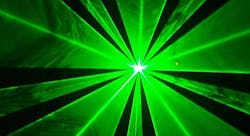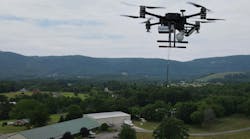Officials of the Army Space and Missile Defense Command in Huntsville, Ala., on Friday issued a presolicitation (W9113M-14-R-0010) for a turn-key laser producing at least 50 kilowatts of output power.
The Army Space and Missile Defense Command is sponsoring the High-Energy Laser Mobile Demonstrator (HEL MD) project, which is seeking to develop a truck-mounted laser weapon able to shoot down enemy rockets, artillery shells, mortars, and unmanned aerial vehicles (UAVs).
Related: Boeing to use 10-kilowatt, high-energy laser weapon to counter rockets and mortars
The chief systems integrator of the HEL MD project is the Boeing Co. Directed Energy Systems segment in St. Louis. Providing a 60-kilowatt fiber laser module for the HEL MD project are laser weapons experts at Lockheed Martin Aculight in Bothell, Wash.
When completed, the HEL MD will consist of a ruggedized high-energy laser installed on a tactical military vehicle that provide area joint force protection to forward operating bases, naval installations, air bases, and other facilities.
Last fall the Army Space and Missile Defense Command issued an industry request for information (W9113M-07-C-0177) for a beam-control subsystem (BCS) for the HEL MD project.
Related: Lockheed Martin Aculight to develop 60-kilowatt laser to kill UAVs, rockets, and mortars
For the solicitation issued Friday, the Army wants a laser with a 200-micron fiber delivery system, with at least 75 meters of fiber length from the laser output to end of the fiber where the laser will link to a beam collimator via an HLC-16 connector.
Trained Army personnel should be able to operate and maintain the laser, which should be adjustable from 500 Watts to at least 50 kilowatts, and can fire continuously at maximum power for as long as 60 seconds, with no more than 10 minutes of regeneration between shots.
The laser's wavelength should be from 1,060 to 1,080 nanometers, with 90 percent of its power inside a 2-nanometer region. The output beam quality should be M2 less than 50.0, Army officials say.
Related: Wanted: companies able to design beam controllers for future high-energy laser weapon
The laser should come with a 532-nanometer, 1-Watt, single-mode collimated visible alignment beam. The laser system should be able to operate for at least 1,000 hours mean time between failures.
Companies interested should respond no later than 10 March 2014. For questions or concerns phone the Army's Chris Katterheinrich at 256-955-5998. More information is online at https://www.fbo.gov/notices/12e802102f8eb6e4191059f2e619c95e.



